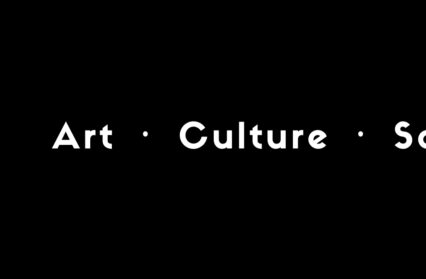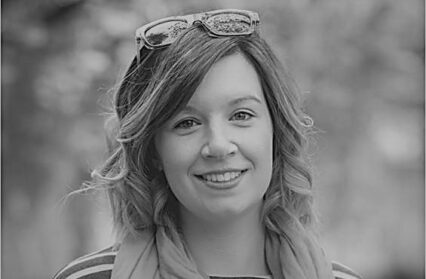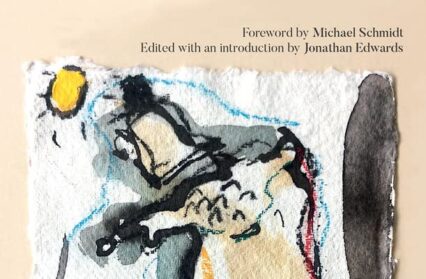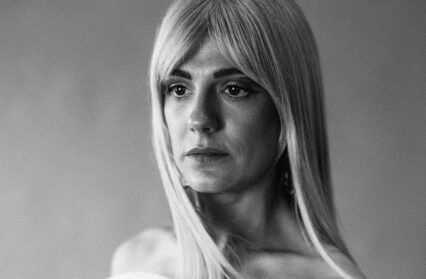May’s Artist in Residence, Durre Shahwar, invited various people to share their experiences of mental health in a series of blogs. Here, motherhood and perinatal OCD is explored in a piece called, Mother Love by Cath Beard. Throughout 2017 artists, including Durre Shahwar will take a leading creative role in what Wales Arts Review publishes, centring their skills on a challenging project over the course of a month. We were inundated with applications, receiving hundreds of emails about the positions, and it was no easy task whittling down all that talent to this final eleven. Our team of six editors debated long into the night, and in the end, we decided on a collection of people who we most want to work with, and whose work excites us. We think you will be excited by them too.
Mother Love by Cath Beard
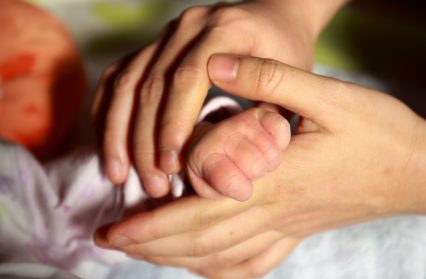
I am a mother of nine, but only two made it to my arms. My expectations of motherhood were framed by loss. So you could say I am full of mother love. The slow sinking of a second line was my warning against hope. Never get comfortable, never assume – every kick and curl could be the last. As my body betrayed me and I was no longer able to hide the bloom, public acknowledgement viable pregnancy was a form of slow torture. Caught in a certainty that if I dared to let myself hope and to love I would lose it all, I split myself in two. The lies my mind sold me, this bargain with anxiety, was my navigation of grief and fear in a pregnancy after loss. It is no surprise, therefore, that the same moment my first child drew breath, those defences crumbled and my mind crumbled with it. My diagnosis was (and is) of severe perinatal OCD (Obsessive Compulsive Disorder).
OCD attacks the very core of its sufferer’s values and closely held principles. In a Mother, it makes a victim doubt their safety, shoots intrusive images of their child’s death is particularly distressing ways, usually directly as a result of the Mother’s actions. These images play like a looped show-reel. Fear feeds and nurtures it. The overwhelming distress caused by this barrage of horror, this obsessional nightmare, causes the actions most widely associated with OCD – repetitive, ritualistic or ruminative protective actions. Then there is avoidance – oh, avoidance. I refused to be alone with my children for 6 months. I knew I wasn’t a threat to them (there is no recorded case of an OCD sufferer acting on these intrusive thoughts and compulsions) but it was in the gnawing space between this knowledge and in the compulsion to protect them from myself that my distress grew and anchored. I simply could not take the risk. I could not take the risk that my food was contaminated and would hurt the baby – so I stopped eating. I could not take the risk that the water supply might be contaminated and hurt the baby – so I stopped drinking. I could not take the risk that I would lose control of myself and all grips on my sanity and stab those I loved – so I hid all knives away from the house. I could not take the risk that my family would die in a hundred hideous, graphic ways – so I would wash and walk and dress and think in 4’s, or in 9’s. Each ‘balancing’ action brought temporary relief – and made that irrational belief stronger. And stronger. Until there was nothing left of me but the OCD.
My emotional currency is measured in words. One therapeutic exercise that was most effective involved writing the most horrific thoughts repeatedly until they lost their power. I reach for my bookshelf as others reach for their Bible. OCD left me unable to read or to write. Or to speak. During my recovery, I struggled to find literary representations of mental illness that spoke to me both as a woman and as a mother. It was the first time words had let me down so horribly, barring those scattered fractured lines from my undergraduate days which would dance through at the darkest times. Words were written by men and by modernists, abstract and distanced from the organic, visceral pain I was subjecting myself to. TS Eliot and Ezra Pound merged together to a literary froth while the voiceless riptide worked at my moorings. The words I needed so desperately were hard to speak and to write and they are almost invisible in women’s writing because of this. So, when in the fledgeling stages of my recovery two years later I found myself at a fireside book launch in Gregynog, listening to Jasmine Donahaye speak, I was taken aback at her description of negative reactions to the poem Mother Love. This negativity hinged upon her use of intrusive images, as described by a mother gazing at a wood-burner. When I finally tracked it down I was floored, I was uncomfortable – but here it was, written unashamedly in black and white, signalling from one mother to another – here are the words that you can anchor to. This horror is not yours solely to bear. My worst fears, thoughts and feelings were contained within the final stanza – and yet their rendering in black and white, in the printed word, lessened their power over me:
I have released the brake and watched the car roll
into the still lake. I have rested the axe on the lawn.
I have freed myself, grim Demeter, and the heavy-headed baby
is cooing inside the stove that is the hearth, that is my hearth,
that is my home, which is empty of love.[1]
Here the unimaginable made given flesh, a fear-wrought construct no longer buried with afterbirth – that unspeakable other birthed at the same time a Mother is. It is not an easy read, it is not a comforting one – but perinatal mental illness is not easy or comfortable and it needs to be spoken about, and not just in terms of recovery and prevention.
So I write this and I am recovered. No longer tortured by these images, no longer allowing myself to be ruled by fear and a pathological need for absolute certainties. I mother and I mother well, and with love, and with hope. But I am deeply scarred. Without the words of other women, I would be left with only clumsy approximations of dead men’s words. It is slowly filling, this resource of words, that I both feared and yearned for.
Wales has no Mother and Baby unit (it was closed in 2013). There is a skeletal community service running on passion and little investment. There is much talk, of prevention and of stigma – but little movement on the interventions that work. Living in isolation, and in fear, women will continue to store their silences.
[1]Donahaye, Jasmine (2006): Mother love, Misappropriations, pp.56-57
Mother Love by Cath Beard is part of Durre Shawhar’s residency and the new series, Artists in Residence. If you want to find out about Cath Beard’s work, click here.


